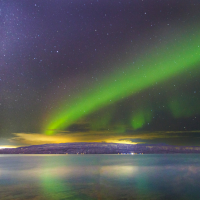Giro 2022 - Stage 19: Marano Lagunare – Santuario di Castelmonte 178 km ***Spoilers***

Friday, May 27th, 11:10 BST
The 19th stage of the Giro returns to the mountains, crosses over to Slovenia and closing with a summit finish. It travels in 178 kilometres from Marano Lagunare to the Sanctuary of Castelmonte. It includes three intermediate climbs before the finish, which lies uphill. The Kolovrat climb is a candidate for being called the hardest in the race, as it ascends at nearly 10% for 10 km and offers the best opportunity for a long range attack from riders looking to claw back more than a few seconds.
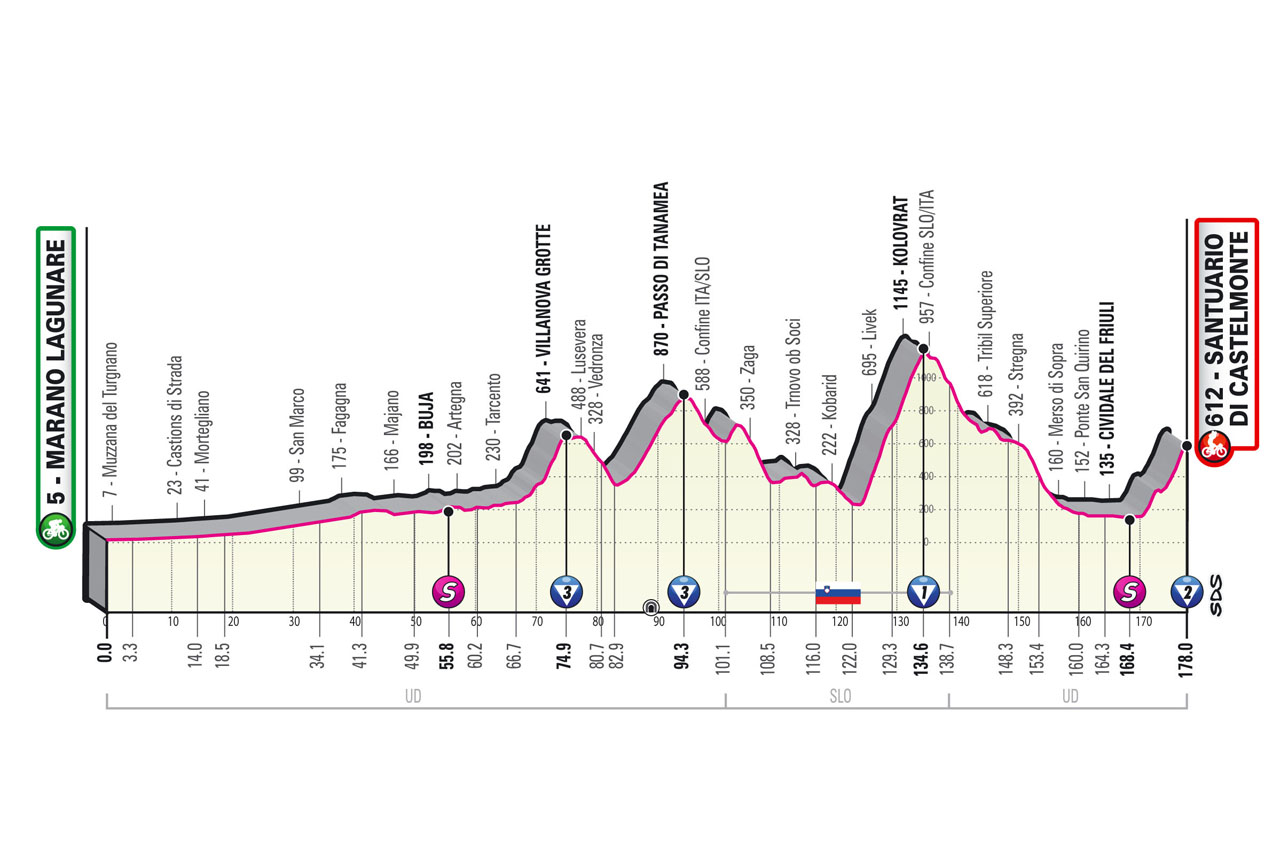
Starting in Marano Lagunare, the route cuts across the lowlands all the way to the morainic hills around Fagagna and Majano. The stage course crosses Buja, reaches the Julian Prealps, runs past the Grotte di Villanova . The route enters Slovenia through the Uccea pass. After clearing the Passo Solarie, a long false-flat down leads back to Italy, snaking through the woods. Starting in Cividale del Friuli, the peloton will tackle the closing climb to the Castelmonte sanctuary.
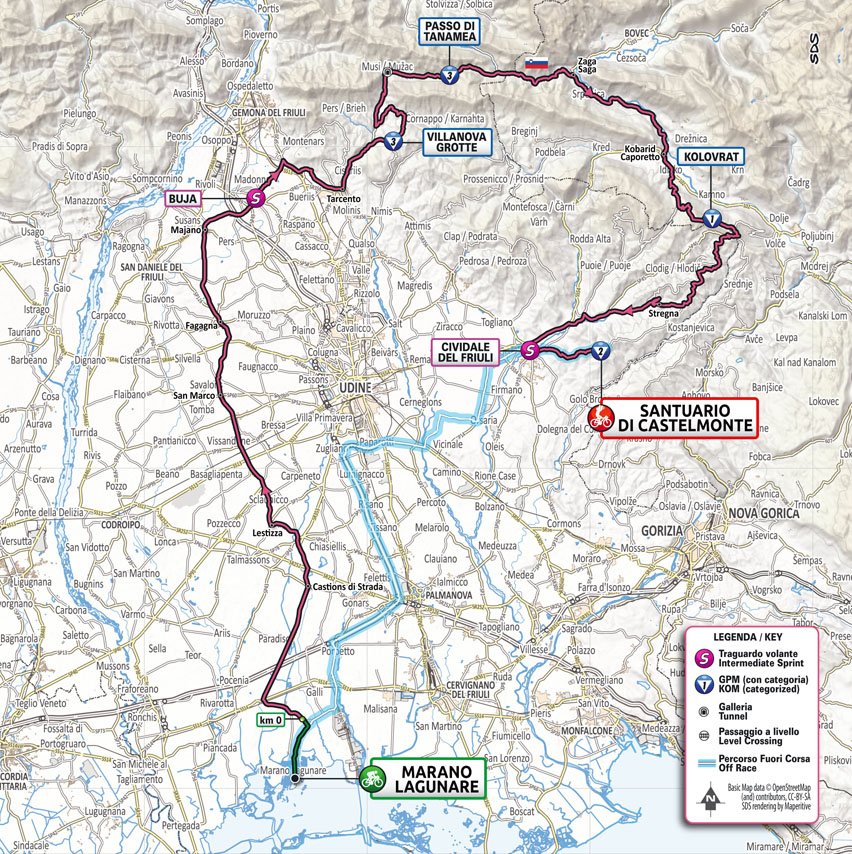
The Climbs:
Villanova Grotte: GPM3, 3.7 km at 8%
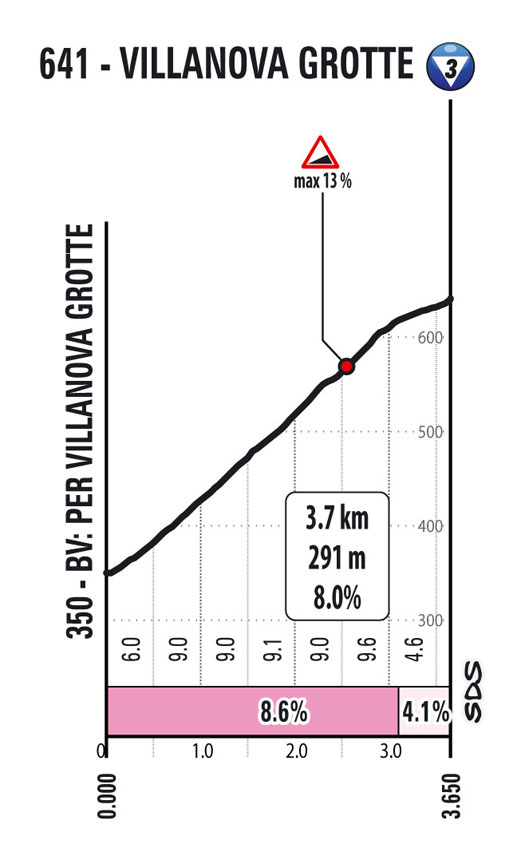
Passo di Tanamea: GPM3, 9.7 km at 5.3%

Kolovrat: GPM1, 10.3 km at 9.2%
https://www.giroditalia.it/en/kolovrat/
Across the border, the ascent begins in a small village along the banks of the Isonzo called Kobarid, which is probably best known by its Italian name, Caporetto.
The Caporetto. The scene of the battle that forced the Italian troops to a long retreat to the line of the Piave River in October 1917
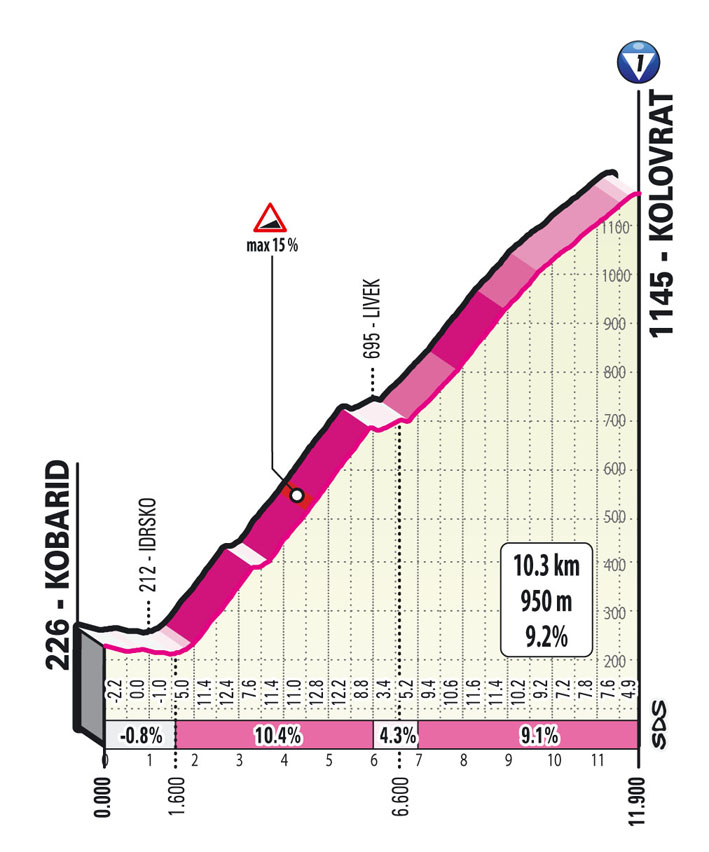

Final Kms.
The final climb is approx. 7 km long, with a short downhill stretch after 2.5 km. The sharpest gradients (up to 13%) are found at the foot of the climb, and when the road starts to go up again after the fall. The roadway is wide and well surfaced. The home straight is on tarmac road.

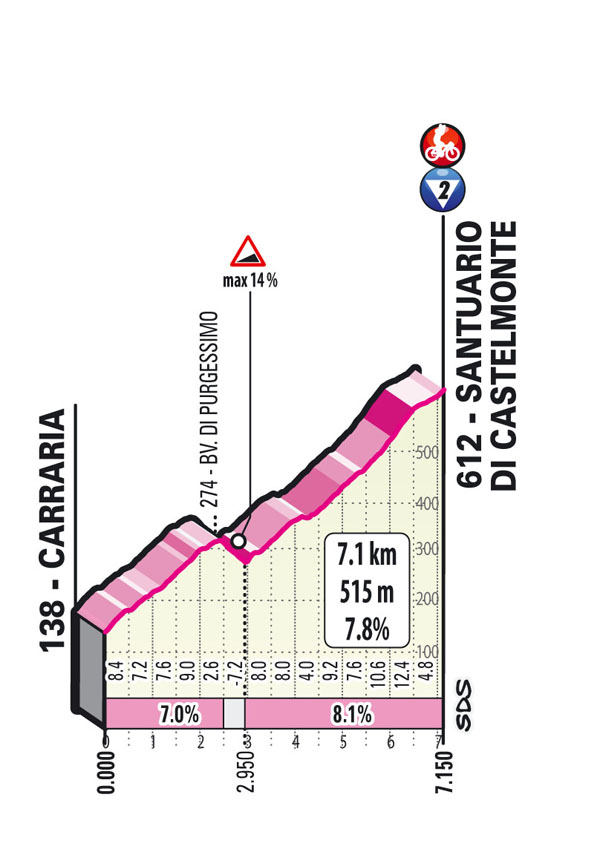
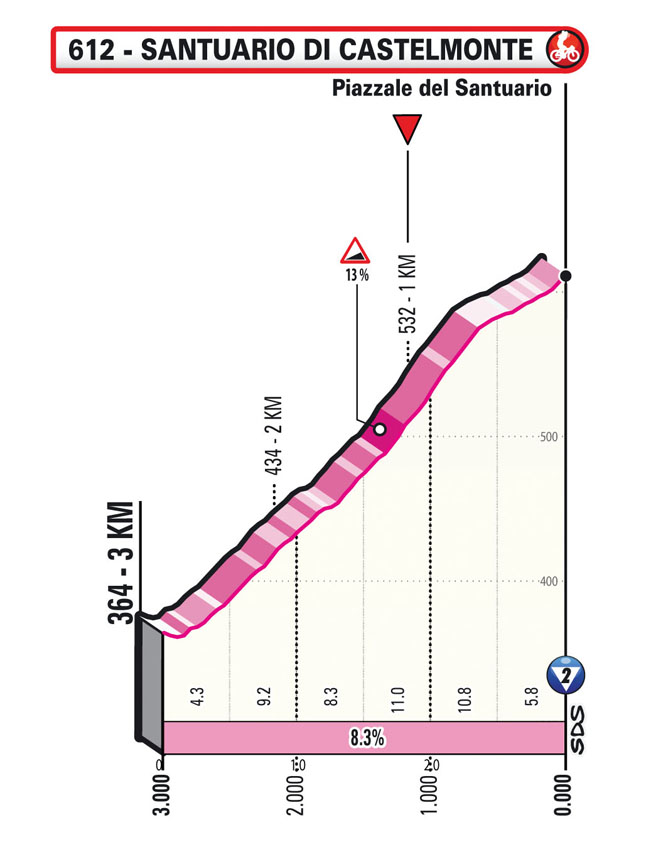
What to Expect.
A very long, tough battle to get into this breakaway, as there are over 70kms to the first climb, but then there is a good chance to go all the way.
The finish is uphill, but since the climb to the line is not very long it remains to be seen if GC riders see it fit to go for the win.
Especially, since the next stage is much more suited for a GC battle. However, by now, in some cases, needs must.
Favourites 19th stage 2022 Giro d’Italia
***** Bauke Mollema, Hugh Carthy, Giulio Ciccone
**** Alejandro Valverde, Lucas Hamilton, Mathieu van der Poel, Guillaume Martin
*** Thomas De Gendt, Lennard Kämna, Mauri Vansevenant, Lorenzo Fortunato
** Gijs Leemreize, Thymen Arensman, Santiago Buitrago, Koen Bouwman
* Mikel Landa, Jay Hindley, Richard Carapaz, Joe Dombrowski
Marano Lagunare
In Friuli, along the state road from Venice to Trieste, turning south, there is a small strip of land that has its own natural extension in a huge water basin, the Lagoon. It is closed to the sea by a coastal barrier of islands and sandy banks. This is Marano Lagunare: the last bastion of mainland before the sea.
A small and ancient village of which the first historical information dates back to 590, it is a lively fishing community that is strongly linked to secular religious traditions.

Gastronomy
Marano Lagunare has managed to preserve over the centuries its own culture and culinary traditions by giving value to the products of this land, of salt and brackish water, which have been the main characters of the typical dishes on the table of local people.
The undisputed king of traditional cuisine is the “Bisato in speo”, which is an eel cooked over direct fire for hours on a spit of wood and seasoned with laurel leaves and coarse salt.

In addition to fresh fish, local restaurants offer several types of bivalve mollusks. Both raw and cooked “fasolari” have become increasingly famous on local tables and they are used in kitchens with “vongole veraci”, “peverasse” (clams) and “capesante” (scallop) in order to prepare different dishes raging from sauces for pasta, to gratins and other more refined recipes.

Santuario di Castelmonte
Prepotto is an Italian town with just over 700 inhabitants in Friuli-Venezia Giulia. Among the largest municipalities in the province of Udine, it borders for 15 km with Slovenia coinciding with the Judrio stream, which was the border between the Republic of Venice and Austria with the Treaty of Worms of 1521.
The pride of the Prepotto area is the Schioppettino, a native vine born right in the Judrio Valley that is part of the Ribolla family. This small town famous not only for the landscape, but also for the castle and sanctuary of Castelmonte and the many farms which make Prepotto the city of wine.

If Friuli Venezia Giulia is the best known Italian region for the production of quality white wines, Schioppettino stands out as the autochthonous red grape variety capable of rivaling the white ones. Especially in the territory of Prepotto and in the Judrio Valley, as recognized by the “Schioppettino di Prepotto” classed in the sub-area of the “Friuli Colli Orientali” DOC, this area is specifically reserved for wine made from grapes of the same name. A method oriented around a production of uncompromised quality establishes that the vineyards must produce a maximum of 1.55 kg of grapes per vine and that the harvest is carried out manually. Aging is mandatory in wooden barrels for at least 12 months and must be placed on the market no earlier than September of the second year following the harvest.
Schioppettino of Prepotto is intense ruby red, strong scent of wild berries and morello cherries and a singular and precious spicy note of pepper.
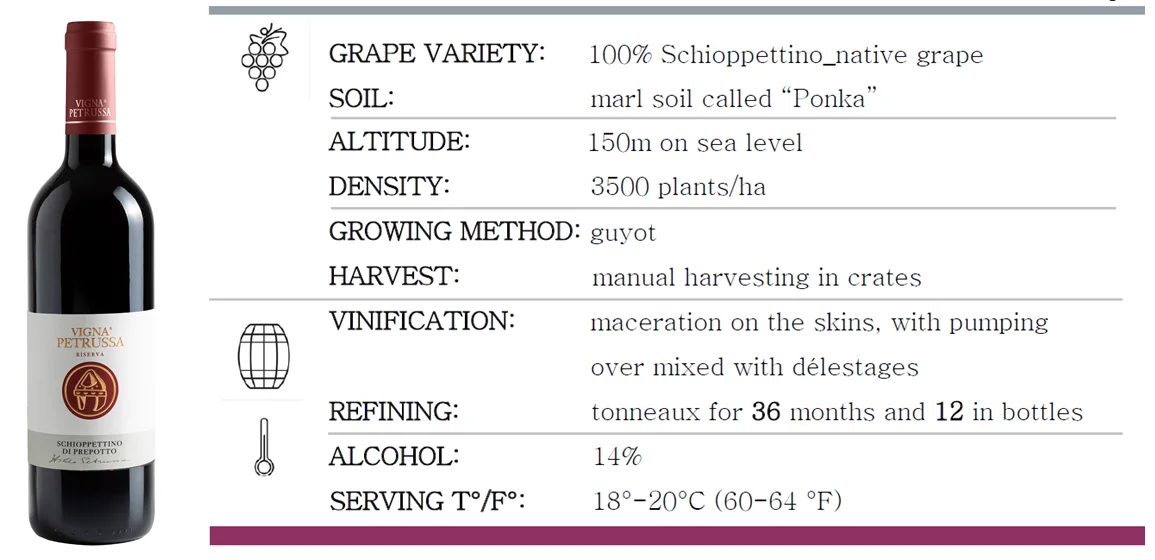
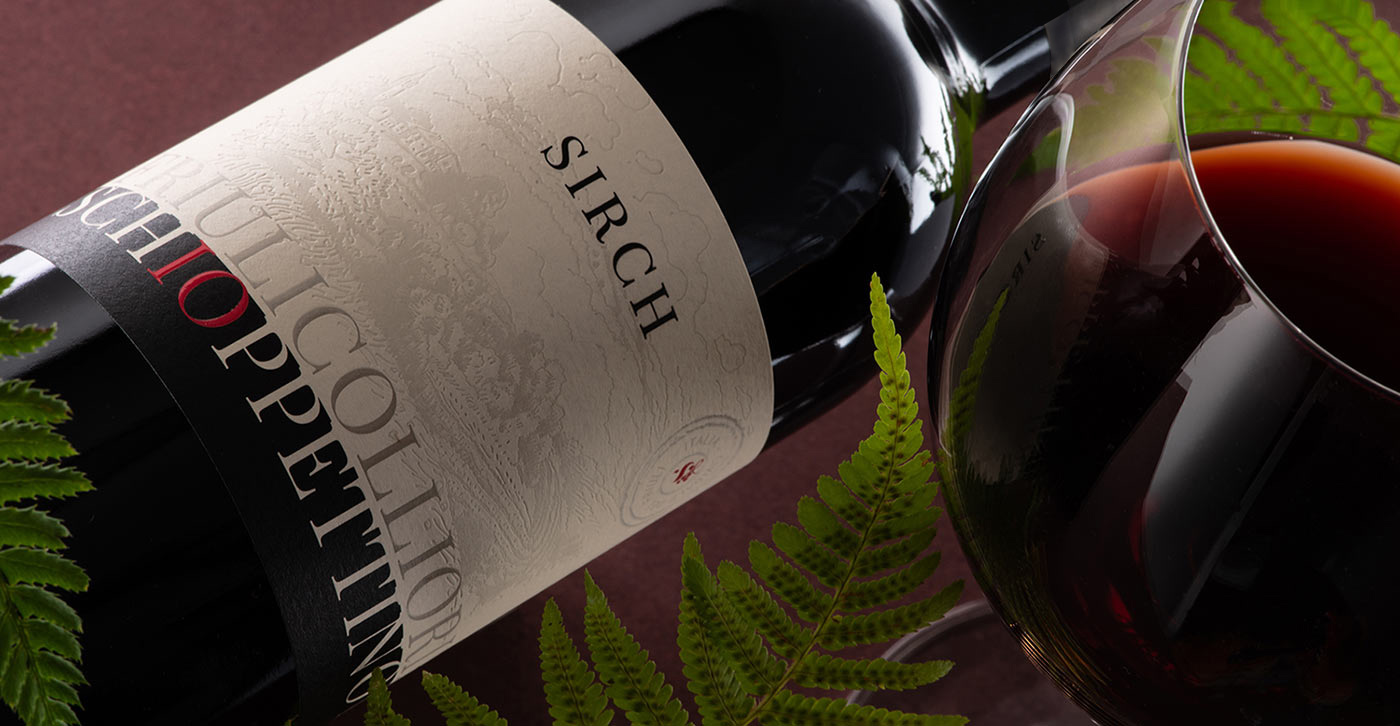
Comments
-
Kolovrat means carousel in Slovenian. Cue puns from Kirby tomorrow.0
-
Today, Blazing only covers the food from the stage start area, so here are some ideas from the stage finish area:
As close to the border of Slovenia, and anyway once part of Austria-Hungary, one finds central European influences in Friuli, like in Jota (a stew of beans, sauerkraut, potatoes and bacon) and Strucolo de pomi, a Friulian version of Apfelstrudel which, unlike Austrian Strudel, includes pine nuts.
But there are also many quite definite Italian dishes ......
A lot of maize is grown around Udine, and probably more Polenta is consumed per head in the area than elsewhere in Italy (Polenta is also popular just over the border in Slovenia, there called Žganci). A typical dish of Friuli is Polenta pasticciata ai funghi e gamberi (baked polenta with a topping of mushrooms and shrimps in a wine sauce).
Friuli is known for Gubana Friulana, a cake (made with a yeast dough, filled with a mixture of walnuts and almond, raisins, candied peel and pine nuts) baked in the shape of a large snail. The cake originates from the valleys through which the stage today will pass in the 25-30 km following Kolovrat, when heading to Cividale del Friuli. 1
1 -
Mushrooms with crustaceans? Wow.0
-
And just up the road from Kolovrat you have the wonderful Passo Mangartjimmyjams said:Today, Blazing only covers the food from the stage start area, so here are some ideas from the stage finish area:
As close to the border of Slovenia, and anyway once part of Austria-Hungary, one finds central European influences in Friuli, like in Jota (a stew of beans, sauerkraut, potatoes and bacon) and Strucolo de pomi, a Friulian version of Apfelstrudel which, unlike Austrian Strudel, includes pine nuts.
But there are also many quite definite Italian dishes ......
A lot of maize is grown around Udine, and probably more Polenta is consumed per head in the area than elsewhere in Italy (Polenta is also popular just over the border in Slovenia, there called Žganci). A typical dish of Friuli is Polenta pasticciata ai funghi e gamberi (baked polenta with a topping of mushrooms and shrimps in a wine sauce).
Friuli is known for Gubana Friulana, a cake (made with a yeast dough, filled with a mixture of walnuts and almond, raisins, candied peel and pine nuts) baked in the shape of a large snail. The cake originates from the valleys through which the stage today will pass in the 25-30 km following Kolovrat, when heading to Cividale del Friuli.

with its awesome bridge at the bottom
leading down to the Soca valley
and then the Vrsic pass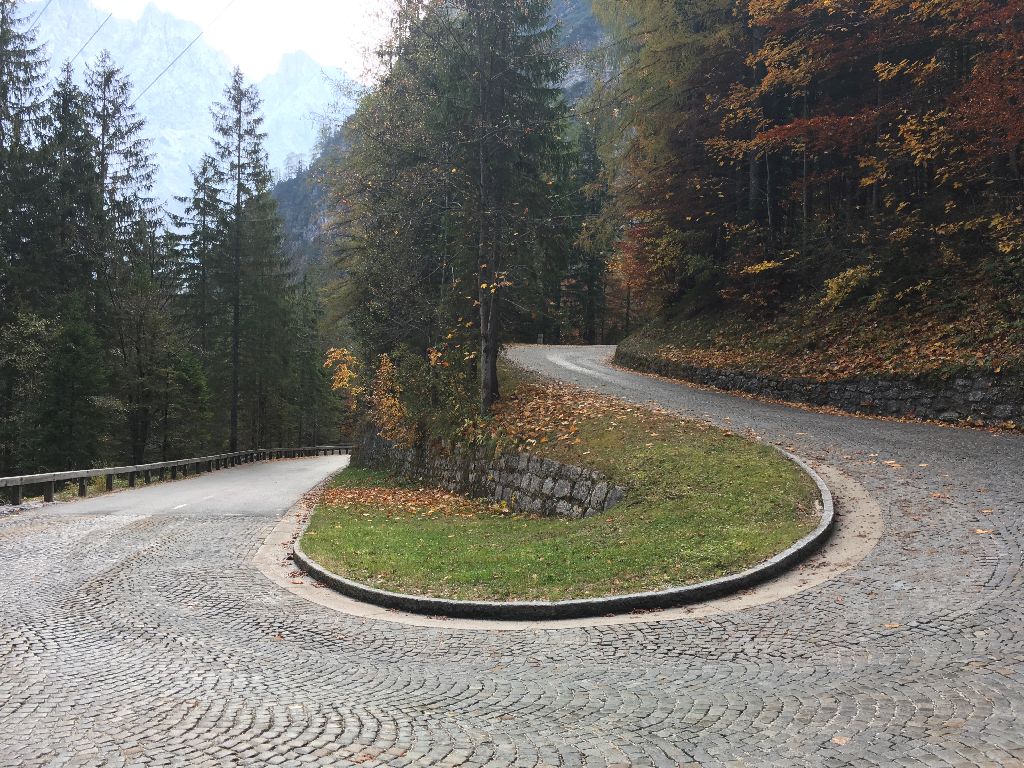
An incredibly underrated part of the world for riding, and a fair bit cheaper than Italy or Austria too.0 -
If Bahrain don't attack on the Kolovrat - this is officially the most boring post Armstrong GT
 'Do not compare your bike to others, for always there will be greater and lesser bikes'0
'Do not compare your bike to others, for always there will be greater and lesser bikes'0 -
If you're hearing Kirby, then you will be wondering where all the hills are today.phreak said:Kolovrat means carousel in Slovenian. Cue puns from Kirby tomorrow.
 1
1 -
kingstongraham said:
If you're hearing Kirby, then you will be wondering where all the hills are today.phreak said:Kolovrat means carousel in Slovenian. Cue puns from Kirby tomorrow.

In between the roundabouts, I assumeTwitter: @RichN950 -
Then MvdP attacked"If I was a 38 year old man, I definitely wouldn't be riding a bright yellow bike with Hello Kitty disc wheels, put it that way. What we're witnessing here is the world's most high profile mid-life crisis" Afx237vi Mon Jul 20, 2009 2:43 pm0
-
Thanks for the local knowledge input guys.
This bun fight is going to last a long, long way, I think.
A pity these days don’t seem to be fully appreciated by some."Science is a tool for cheaters". An anonymous French PE teacher.0 -
It's very very very very very fast"If I was a 38 year old man, I definitely wouldn't be riding a bright yellow bike with Hello Kitty disc wheels, put it that way. What we're witnessing here is the world's most high profile mid-life crisis" Afx237vi Mon Jul 20, 2009 2:43 pm0
-
Did Cav make the break in the end? I assume that was to try to pick up points later?0
-
Not so far - Ballerini and Schmid from QS.Pross said:Did Cav make the break in the end? I assume that was to try to pick up points later?
0 -
Adam Blythe needs to check his info.
Just said the final climb average is under 5% when it’s just under 8%
Big difference"Science is a tool for cheaters". An anonymous French PE teacher.0 -
Israel not having a good giro"If I was a 38 year old man, I definitely wouldn't be riding a bright yellow bike with Hello Kitty disc wheels, put it that way. What we're witnessing here is the world's most high profile mid-life crisis" Afx237vi Mon Jul 20, 2009 2:43 pm0
-
Oh well, the break is sorted and it’s not the strongest for climbing."Science is a tool for cheaters". An anonymous French PE teacher.0
-
Best placed in the break is over an hour back.0
-
TV viewers are going to be throwing things at their screens.
Coverage was going to miss the fight for the breakaway in any case.
The girlie tennis is already overrunning and they are only half way through the second set…."Science is a tool for cheaters". An anonymous French PE teacher.0 -
But it's a crucial third round match between world number 14 Someoneacova and world number 48 Someoneeslseacovablazing_saddles said:
The girlie tennis is already overrunning and they are only half way through the second set….Twitter: @RichN950 -
I got the app because of the lack of TV coverage .. bit of a strategy there to force its use I thought"If I was a 38 year old man, I definitely wouldn't be riding a bright yellow bike with Hello Kitty disc wheels, put it that way. What we're witnessing here is the world's most high profile mid-life crisis" Afx237vi Mon Jul 20, 2009 2:43 pm0
-
Quite.RichN95. said:This stage at the moment reminds me of a stage after someone has died the previous day.
Ineos want all the bonus time taken but it’s a weak breakaway.
Hence the funeral procession behind.
Neither Bahrain of Bora can be arsed."Science is a tool for cheaters". An anonymous French PE teacher.0 -
Bouwman is problem for every one in that break"If I was a 38 year old man, I definitely wouldn't be riding a bright yellow bike with Hello Kitty disc wheels, put it that way. What we're witnessing here is the world's most high profile mid-life crisis" Afx237vi Mon Jul 20, 2009 2:43 pm0
-
Oh Dear it’s one set all in the ping pong, so tv coverage just got bumped back at least another 45 minutes. (Cos clay court is sooo slow)"Science is a tool for cheaters". An anonymous French PE teacher.0
-
Depends how excited he gets chasing KOMs, maybe they can trick him into burning himself outmididoctors said:Bouwman is problem for every one in that break
0 -
Ah Bora have come out of their coma.
11 minutes it is."Science is a tool for cheaters". An anonymous French PE teacher.0 -
Gaviria done what he went in the break for - second in the points jersey now.0
-
Why should Bora care about whether it's 11 minutes or 20 minutes?0
-
Boy tv viewers just got lucky.
Someoneelseecova quit with injury."Science is a tool for cheaters". An anonymous French PE teacher.0 -
We have cycling on TV. What do I need to watch Discovery+ on TV? A firestick?0
-
I'm still on ES Player but yes a Firestick does the job nicely. Others tend to using casting but my TVs aren't great for that.TheBigBean said:We have cycling on TV. What do I need to watch Discovery+ on TV? A firestick?
0


